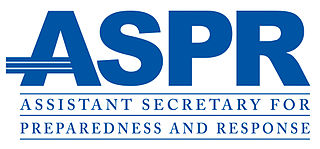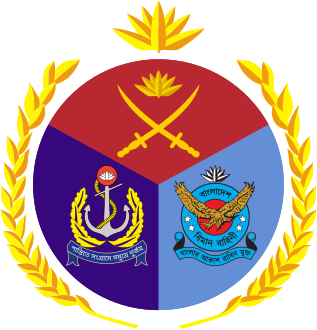
The Federal Emergency Management Agency (FEMA) is an agency of the United States Department of Homeland Security, initially created by Presidential Reorganization Plan No. 3 of 1978 and implemented by two Executive Orders on April 1, 1979. The agency's primary purpose is to coordinate the response to a disaster that has occurred in the United States and that overwhelms the resources of local and state authorities. The governor of the state in which the disaster occurs must declare a state of emergency and formally request from the president that FEMA and the federal government respond to the disaster. The only exception to the state's gubernatorial declaration requirement occurs when an emergency or disaster takes place on federal property or to a federal asset—for example, the 1995 bombing of the Alfred P. Murrah Federal Building in Oklahoma City, Oklahoma, or the Space Shuttle Columbia in the 2003 return-flight disaster.
In the United States, an Office of Emergency Management (OEM), alternatively called an Emergency Management Office (EMO), or an Emergency Management Agency (EMA) in some areas, is an agency at the local, tribal, state, national or international level that holds responsibility of comprehensively planning for and responding to and recovering from all manner of disasters, whether man-made or natural. An OEM may also be requested to provide consequence management for large special events such as major gatherings, visiting dignitaries, etc. OEM is also used in Canada notably in Toronto.

Emergency management is the organization and management of the resources and responsibilities for dealing with all humanitarian aspects of emergencies. The aim is to reduce the harmful effects of all hazards, including disasters.
Most emergency management in the United States is done at the local and state level. The Department of Homeland Security has attempted to standardize equipment, organizational structures, and terminology to create better response and preparedness to large and small-scale disasters across the country. The National Incident Management System is a collection of principles and methods that can be utilized by local, state, federal emergency managers as well as the private sector and NGOs. NIMS aims to better improve the nation's response to emergencies. Its goal is a better system that can more efficiently allocate resources in the event of a disaster and facilitate cooperation among diverse entities and agencies. Large-scale disasters in the past in the U.S. suffered from a lack of solid coordination and authority, as well as different entities utilizing different lingo when communication which led to confusion. NIMS attempts to solve these issues. To that end, FEMA developed the National Incident Management System (NIMS).

The National Disaster Medical System (NDMS) is a federally coordinated healthcare system and partnership of the United States Departments of Health and Human Services (HHS), Homeland Security (DHS), Defense (DOD), and Veterans Affairs (VA). The purpose of the NDMS is to support State, local, Tribal and Territorial authorities following disasters and emergencies by supplementing health and medical systems and response capabilities. NDMS would also support the military and the Department of Veterans Affairs health care systems in caring for combat casualties, should requirements exceed their capacity.
The National Agency for Disaster Countermeasure, abbreviated as BNPB, is the Indonesian board for natural disaster affairs. It was established in 2008 to replace the National Disaster Management Coordinating Board. BNPB is directly responsible to the President of Indonesia and the chairman is directly appointed by the President.

The National Disaster Risk Reduction and Management Council (NDRRMC), formerly known as the National Disaster Coordinating Council (NDCC), is a working group of various government, non-government, civil sector and private sector organizations of the Government of the Republic of the Philippines established by Republic Act 10121 of 2010. It is administered by the Office of Civil Defense (OCD) under the Department of National Defense (DND). The Council is responsible for ensuring the protection and welfare of the people during disasters or emergencies. The NDRRMC plans and leads the guiding activities in the field of communication, warning signals, emergency, transportation, evacuation, rescue, engineering, health and rehabilitation, public education and auxiliary services such as fire fighting and the police in the country. The Council utilizes the UN Cluster Approach in disaster management. It is the country's focal for the ASEAN Agreement on Disaster Management and Emergency Response (AADMER) and many other related international commitments.

The Office of the Assistant Secretary for Preparedness and Response (ASPR) within the United States Department of Health and Human Services was created under the Pandemic and All Hazards Preparedness Act in the wake of Hurricane Katrina to lead the nation in preventing, preparing for, and responding to the adverse health effects of public health emergencies and disasters. ASPR focuses on preparedness planning and response; building federal emergency medical operational capabilities; countermeasures research, advance development, and procurement; and grants to strengthen the capabilities of hospitals and health care systems in public health emergencies and medical disasters. The office provides federal support, including medical professionals through ASPR’s National Disaster Medical System, to augment state and local capabilities during an emergency or disaster.

The National Disaster Response Force (NDRF) is a specialised force constituted "for the purpose of specialist response to a threatening disaster situation or disaster" under the Disaster Management Act, 2005. The "Apex Body for Disaster Management" in India is the National Disaster Management Authority (NDMA). The Chairman of the NDMA is the Prime Minister.
National Institute of Disaster Management abbr. NIDM, is a premier institute for training and capacity development programs for managing natural disasters in India, on a national as well as regional basis. The National Centre of Disaster Management (NCDM), constituted under an Act of Parliament in 1995; was re-designated to give the present name of National Institute of Disaster Management (NIDM) by the Disaster Management Act 2005 passed by President of India on 9 January 2006,
National Disaster Management Authority, is an autonomous and constitutionally established federal authority mandated to deal with whole spectrum of disasters and their management in the country.
The Disaster Management Act, 2005, No. 53 of 2005, was passed by the Rajya Sabha, the upper house of the Parliament of India on 28 November, and by the Lok Sabha, the lower house of the Parliament, on 12 December 2005. It received the assent of The President of India on 9 January 2006. The Disaster Management Act, 2005 has 11 chapters and 79 sections. The Act extends to the whole of India. The Act provides for "the effective management of disasters and for matters connected there with or incidental thereto."

National Disaster Management Authority, abbreviated as NDMA, is an apex Body of Government of India, with a mandate to lay down policies for disaster management. The phrase disaster management is to be understood to mean 'a continuous and integrated process of planning, organising, coordinating and implementing measures, which are necessary or expedient for prevention of danger or threat of any disaster,mitigation or reduction of risk of any disaster or severity of its consequences, capacity building, preparedness to deal with any disaster, prompt response, assessing the severity or magnitude of effects of any disaster, evacuation, rescue, relief, rehabilitation and reconstruction'. NDMA was established through the Disaster Management Act enacted by the Government of India on 23 December 2005. NDMA is responsible for framing policies, laying down guidelines and best-practices and coordinating with the State Disaster Management Authorities (SDMAs) to ensure a holistic and distributed approach to disaster management. It is headed by the Prime Minister of India and can have upto nine other members. Since 2014, there have been four other members. There is a provision to have a Vice Chair-person if needed. NDMA has a vision to "build a safer and disaster resilient India by a holistic, pro-active, technology driven and sustainable development strategy that involves all stakeholders and fosters a culture of prevention, preparedness and mitigation." NDMA equips and trains other Government officials, institutions and the community in mitigation for and response during a crisis situation or a disaster. It works closely with the National Institute of Disaster Management for capacity building. It develops practices, delivers hands-on training and organizes drills for disaster management. It also equips and trains disaster management cells at the state and local levels.
National Disaster Management Authority may refer to:

The Armed Forces Division (AFD) is the principal national command authority for national defense of the People's Republic of Bangladesh. The command and control of the Bangladesh Armed Forces is exercised in this division, under direct control and supervision by the Prime Minister who is also in charge of Ministry of Defence. Lieutenant General Md Mahfuzur Rahman is the present Armed Forces Division's Principal Staff Officer. The headquarter is located in Dhaka Cantonment.
Disaster management in India it refers to the conservation of lives and property during a natural and man-made disaster. Disaster management plans are multi-layered and are planned to address issues such as floods, hurricanes, fires, mass failure of utilities, rapid spread of disease and droughts.India is especially vulnerable to natural disasters because of its unique geo-climatic conditions, having recurrent floods, droughts, cyclones, earthquakes, and landslides. As India is a very large country, different regions are vulnerable to different natural disasters. For example, during rainy season the peninsular regions of South India is mostly affected by cyclones and states of West India experience severe drought during summer.
Provincial Disaster Management Authority (PDMA) is a Federal Government organization, which deals with natural or man-made disasters in Khyber Pakhtunkhwa of Pakistan. PDMA's mandate is to engage in activities concerning to all four stages of Disaster Management Spectrum.
Gilgit Baltistan Disaster Management Authority (GBDMA) is an organization which deals with Natural or Man-made Disasters in Gilgit Baltistan, Pakistan. GBDMA's mandate is to engage in activities concerning to all four stages of Disaster Management Spectrum.
National Disaster Management Act, 2010 was passed by Parliament of Pakistan in 2010, it received the assent of the President on 8 December 2010. The Act applies to whole Pakistan including tribal areas of FATA. The Act was passed in backdrop of 2010 Floods in Pakistan and strengthen Disaster Management system.
State Disaster Management Authority (SDMA) Azad Jammu & Kashmir was established to act as leading agency in disaster management, its mitigation and preparedness in Azad Jammu & Kashmir. Azad Jammu & Kashmir is highly prone to multiple hazards and has experienced worst disasters situation due to earthquake, torrential rain/flood, landslides & avalanches in the recent past.







